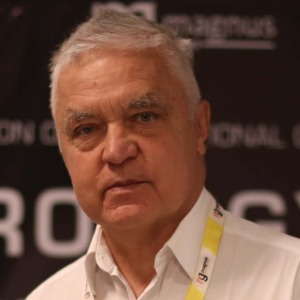Brain Structural Connectivity
The brain is a highly complex and intricate structure with a vast array of connections between cells and regions. Structural connectivity refers to the organization of these connections, reflecting how information is being transmitted across the brain. This structural connectivity is changing as the brain develops throughout life, influencing our behavior, experiences, and cognitive processes. The most fundamental level of brain structural connectivity is the connections between neurons, known as axons. This involves the connections formed by the axon terminals of neurons in one region to the dendrites of neurons in other regions. Oftentimes, these connections can be characterized as pathways that are formed over the course of development and maturation. It is important to note that this type of structural connectivity is not fixed. It can be altered through experience or due to changes within the environment, or can change as a result of aging. This type of structural connectivity is also linked to plasticity, which is the notion that the brain can reorganize its connections depending on experience. In addition to looking at neuronal connectivity, it is also possible to study structural connectivity at a higher level, looking at the organization of neural networks and the way they interact with each other. One way of interpreting this structural connectivity is to look at it through the eyes of a graph. In this graph, neurons are represented by nodes, and the connections between neurons by edges. Analyzing the graph can give us valuable insight into how information is being processed in the brain, and the differences between them. Another way to look at structural connectivity is to look at the brain through an imaging perspective. This can involve looking at the patterns of white matter tracts, which is the long-distance connections between brain regions, or by looking at the isomorphic mapping between two brains, which can tell us about the similarities and differences between two individuals. Overall, brain structural connectivity is a complex and multifaceted concept. Through research, scientists are able to gain a better understanding of how the brain is connected, how this connectivity changes, and how it influences behavior. It is this knowledge that will help us better understand a wide range of brain disorders and neurological diseases, and how to better treat them.

Ken Ware
NeuroPhysics Therapy Institute, Australia
Robert B Slocum
University of Kentucky HealthCare, United States
Yong Xiao Wang
Albany Medical College, United States
W S El Masri
Keele University, United Kingdom
Jaqueline Tuppen
COGS Club, United Kingdom
Milton Cesar Rodrigues Medeiros
Hospital Santa Casa de Arapongas, Brazil




Title : Perception and individuality in patient cases identifying the ongoing evolution of Myalgic Encephalomyelitis/Chronic Fatigue Syndrome (ME/CFS)
Ken Ware, NeuroPhysics Therapy Institute, Australia
Title : Narrative medicine: A communication therapy for the communication disorder of Functional Seizures (FS) [also known as Psychogenic Non-Epileptic Seizures (PNES)]
Robert B Slocum, University of Kentucky HealthCare, United States
Title : Personalized and Precision Medicine (PPM), as a unique healthcare model through biodesign-driven biotech and biopharma, translational applications, and neurology-related biomarketing to secure human healthcare and biosafety
Sergey Victorovich Suchkov, N.D. Zelinskii Institute for Organic Chemistry of the Russian Academy of Sciences, Russian Federation
Title : Neuro sensorium
Luiz Moutinho, University of Suffolk, United Kingdom
Title : Traumatic Spinal Cord Injuries (tSCI) - Are the radiologically based “advances” in the management of the injured spine evidence-based?
W S El Masri, Keele University, United Kingdom
Title : Scalp acupuncture with functional electrical stimulation for the treatment children with autism spectrum disorder
Zhenhuan Liu, Guangzhou University of Chinese Medicine, China